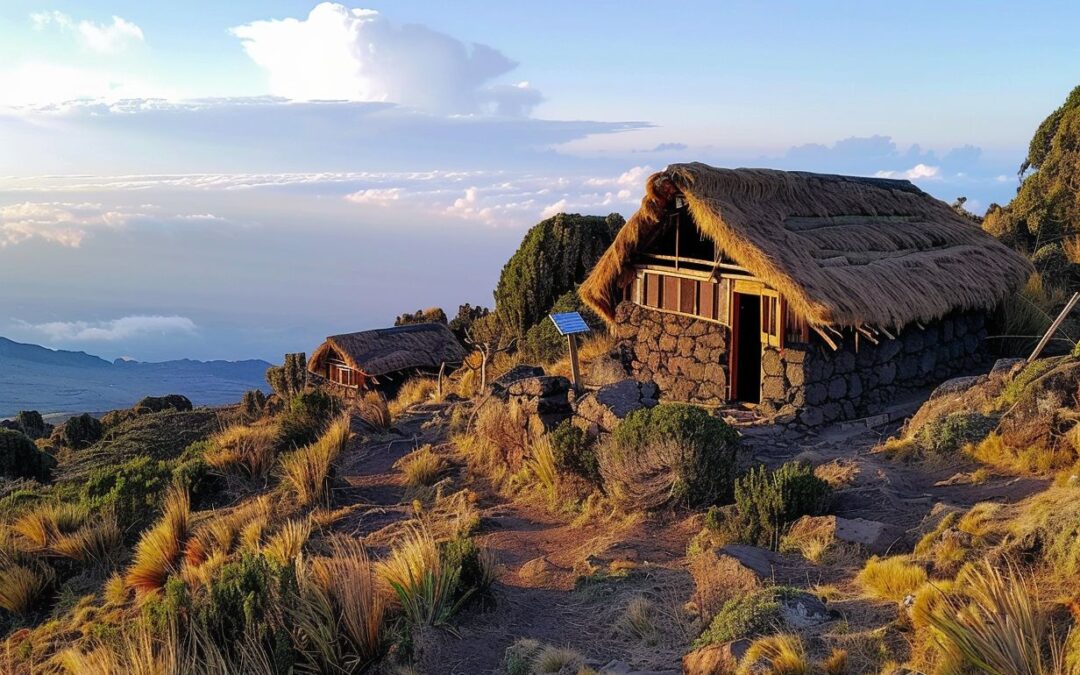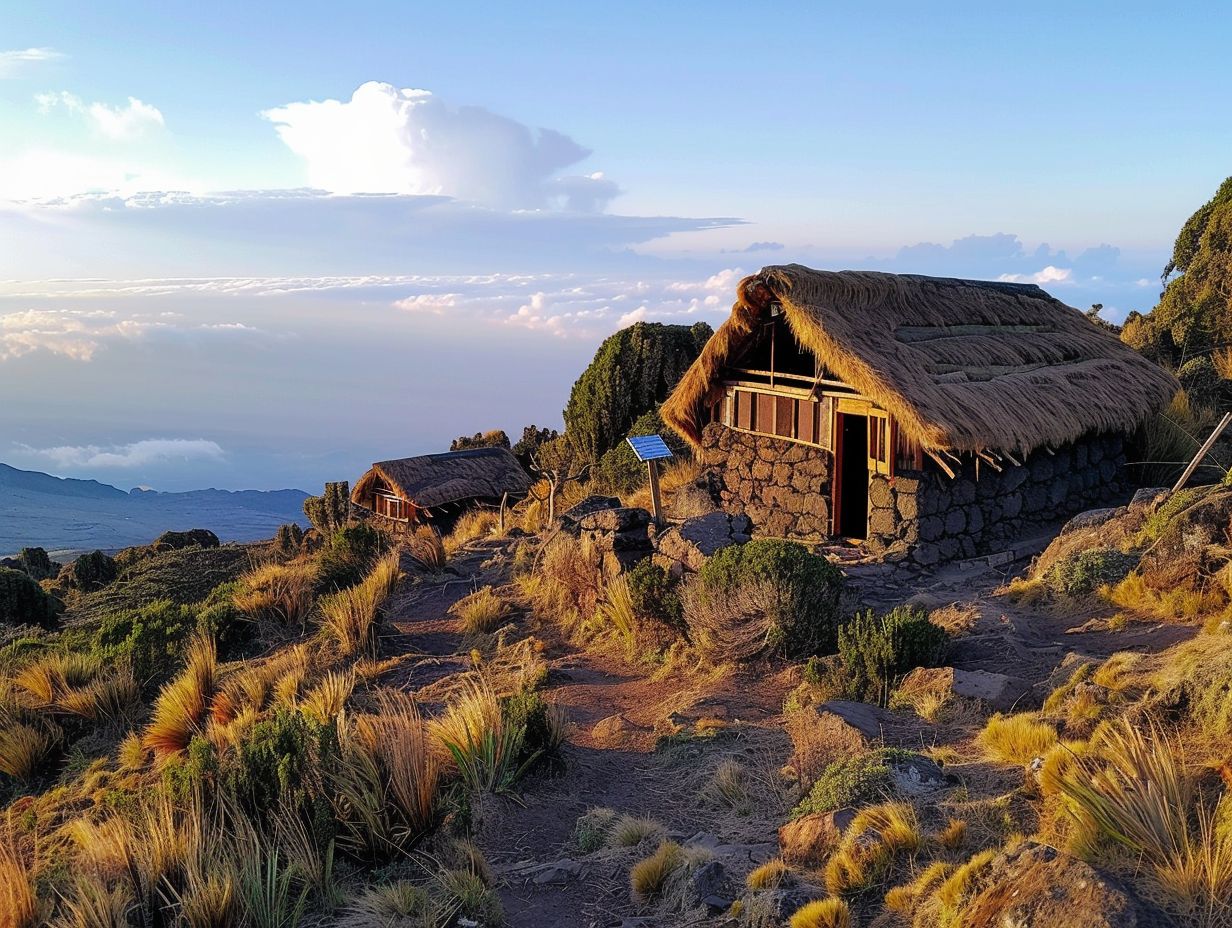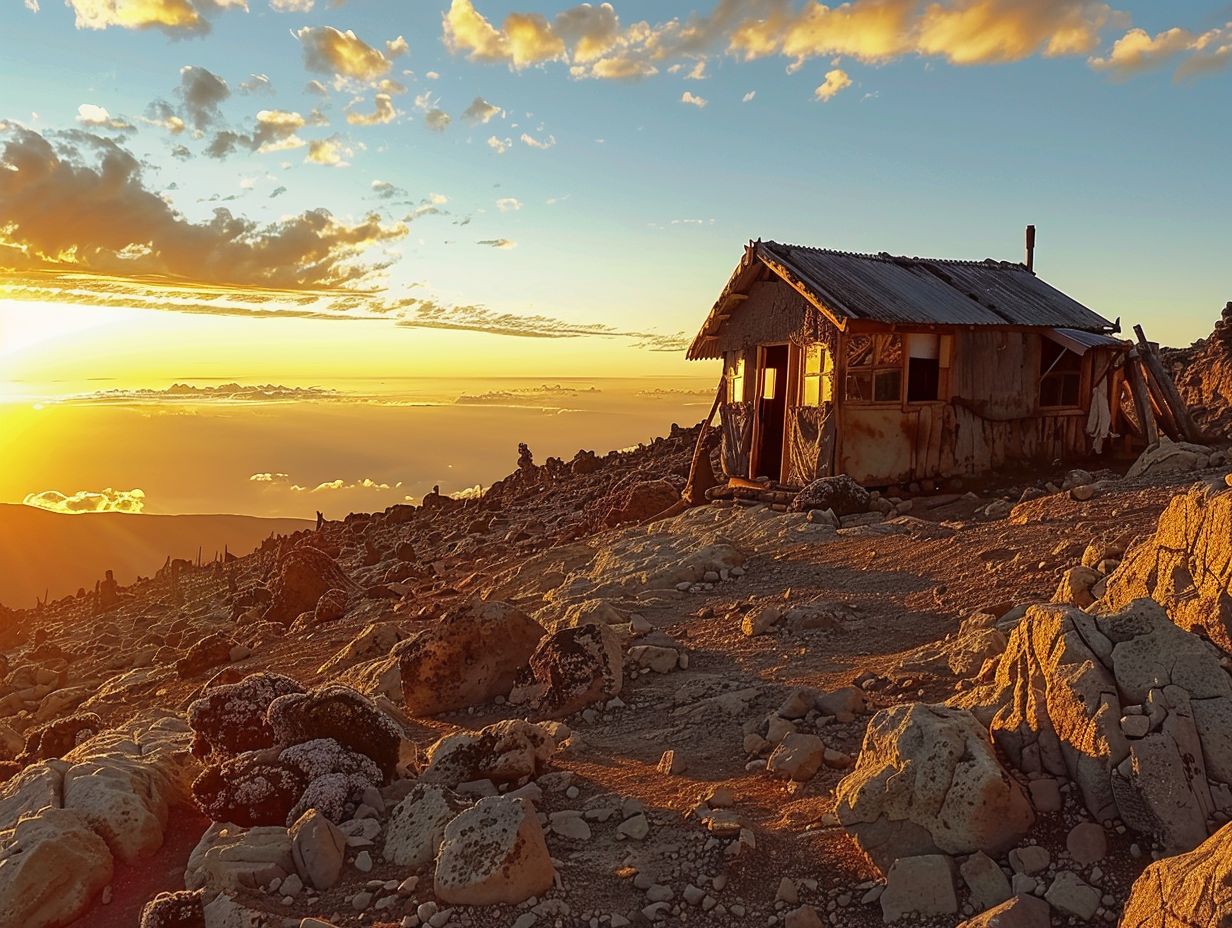In the heart of Tanzania, nestled at an altitude of 4,750 meters, Kibo Huts serve as the final resting point for climbers before tackling the summit of Mount Kilimanjaro. This remote refuge is often the silent witness to countless moments of reflection, anticipation, and sheer human resilience. The crisp, thin air around Kibo Huts carries stories of triumph and endurance, making it an iconic milestone for trekkers.
Kibo Huts have a fascinating history, dating back to the early 20th century when they were established to aid mountaineers on their final ascent. Today, more than 35,000 climbers attempt to scale Kilimanjaro annually, with Kibo Huts playing a crucial role in acclimatization and preparation for the summit push. This humble abode not only offers shelter but also represents the culmination of rigorous physical and mental challenges, standing just five hours away from Uhuru Peak.
Kibo Huts: The Gateway to Uhuru Peak
Kibo Huts mark the final stop before reaching the summit of Mount Kilimanjaro. These huts, situated at 4,750 meters, are essential for climbers preparing for their last push. The altitude here is challenging, and the air is thin, making each breath laborious. However, the promise of Uhuru Peak keeps spirits high and determination strong. Many climbers take this time to acclimate and rest before their early morning ascent.
Staying at Kibo Huts involves understanding and preparing for its unique conditions. Temperatures can plummet below freezing, requiring adequate gear and warm layers. Climbers often reach Kibo Huts by mid-afternoon to maximize rest before their final climb. Hydration is vital, given the altitude’s dehydrating effects. Simple activities like hydrating, eating light meals, and staying warm become crucial.
The huts offer basic accommodations, including bunk beds and common areas for socializing. This communal experience can be comforting, as climbers share stories and strategies. Kibo Huts also provide restroom facilities, though they are quite rudimentary. Essential items to bring include sleeping bags, headlamps, and extra batteries. Proper preparation ensures a more comfortable stay.
The journey from Kibo Huts to Uhuru Peak starts early, often around midnight. Climbers aim to reach the summit by sunrise, witnessing breathtaking views. The trail is steep and rocky, demanding both physical and mental strength. Guides play a crucial role, offering support and encouragement. This final leg is a test of endurance, but the reward of reaching the highest point in Africa is unforgettable.
Role and significance in facilitating the final ascent
Kibo Huts play a crucial role in the final leg of the Kilimanjaro ascent. The huts provide a necessary pause for climbers to rest before the final push. This period of adjustment is vital for acclimatization, reducing the risk of altitude sickness. Guides ensure everyone stays hydrated and fed, preparing their bodies for the demanding climb ahead. Without this stop, climbers would face significant health risks.
The huts are strategically located at a point where climbers need the most support. This location allows for maximum rest and preparation time. Climbers arrive by mid-afternoon to take advantage of every hour of rest. This preparation is key for a successful ascent to Uhuru Peak. Kibo Huts essentially serve as the launchpad for the summit attempt.
The significance of Kibo Huts extends beyond physical preparation. Here, climbers often experience a mental shift, focusing intensely on the goal. The shared experience with fellow climbers builds morale and camaraderie. Support from others who are facing the same challenge is invaluable. This sense of community can be a significant motivator.
Logistically, Kibo Huts offer essential amenities that support the ascent. Basic facilities such as water sources and sheltered sleeping areas are provided. This ensures climbers are as comfortable as possible given the conditions. Simple necessities like recharging headlamps and organizing gear become crucial tasks. These logistical elements are vital in ensuring climbers are well-prepared for their journey to the peak.
Challenges faced by climbers at Kibo Huts
Climbers at Kibo Huts face several challenges, with altitude sickness being the most significant. As climbers ascend, the lower oxygen levels can lead to headaches, nausea, and dizziness. These symptoms can be managed with proper acclimatization and hydration. However, every climber’s body reacts differently. This unpredictability adds to the mental strain.
The cold at Kibo Huts can be intense, especially at night. Temperatures can drop well below freezing. Proper gear and clothing are essential to stay warm. Without adequate insulation, hypothermia becomes a risk. Ensuring you have high-quality equipment is non-negotiable.
Lack of sleep is another common issue. The huts are crowded and communal, leading to noise and limited personal space. Rest can be challenging, but it’s critical for the summit push. Using earplugs and an eye mask might help. The key is to maximize comfort anyway you can.
The final psychological hurdle is the anticipation of the ascent. Climbers often experience anxiety about the trek ahead. This mental challenge requires focus and determination. Sharing experiences with fellow climbers may alleviate some of this stress. This emotional support can be as powerful as any physical preparation.
Key Takeaways
- Kibo Huts are at 4,750 meters on Mount Kilimanjaro.
- They provide essential rest before the final climb to Uhuru Peak.
- Acclimatization at Kibo Huts helps reduce altitude sickness risks.
- Climbers face cold temperatures and limited sleep at Kibo Huts.
- Mental preparation is crucial for the ascent from Kibo Huts.



